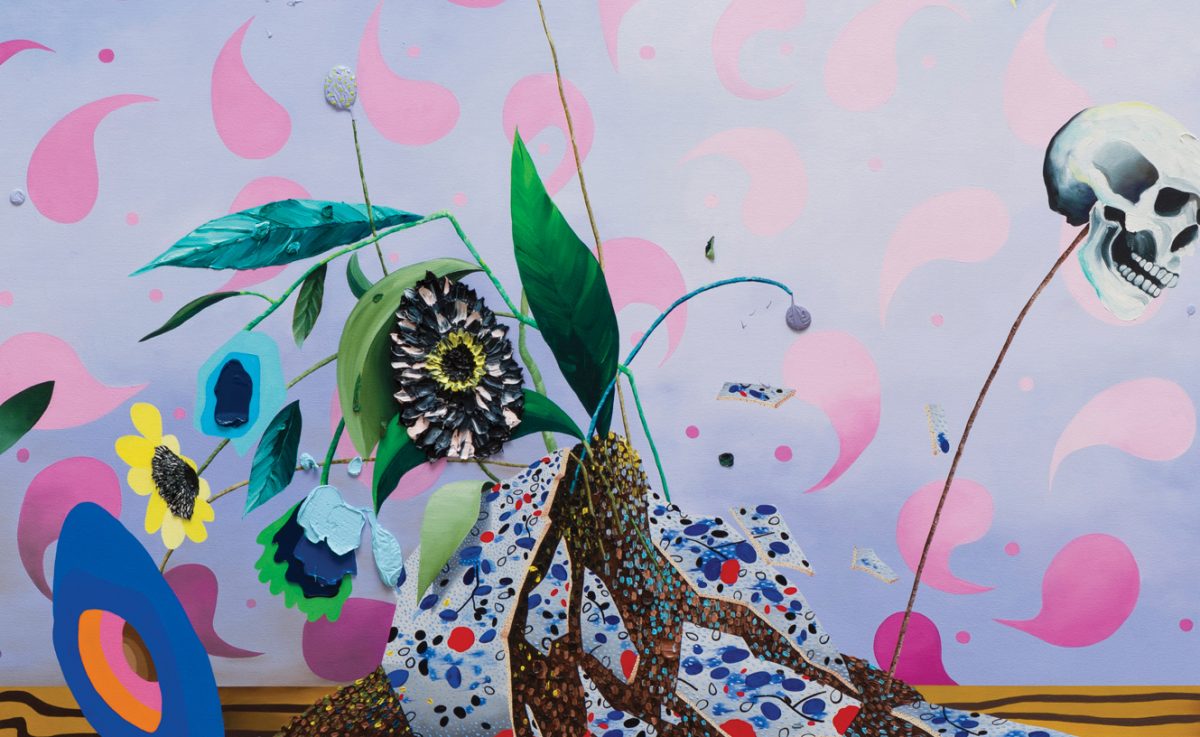Bridget Riley: Painting Now
Sprüth Magers
November 16, 2018—January 26, 2019
A retrospective survey of paintings by British national treasure Bridget Riley is a rare treat in Los Angeles, and this exhibition of work made between 1960 and the present, defiantly titled Painting Now, proved that the 87-year-old artist is still firing on all cylinders.
The first and second canvases of “Memories of Horizons 1-3” (2014) hang together, at right angles; perhaps owing to their size (nearly 11 feet wide), the third is across the room. At first – and second, and third – look, 1 and 2 seem identical: horizontal stripe paintings in Riley’s signature hard-edged style, dominated by shades of dusky rose and violet with aquamarine accents. As one glances back and forth, rhythms emerge, subtle gradients build up then are interrupted, one color affects its neighbor, a third tone often fizzes at the meeting of two colors. (Robert Irwin comes to mind; “Memories of Horizons 1-3” is in direct dialogue with his painstaking rows of colored fluorescent tubes.) Eventually, the difference between the two paintings becomes apparent: a single stripe, near the top, that is mauve in one canvas and orange in the other. The entire painting pivots on this modest change.
If this observational exercise sounds like hard work, it isn’t. There is a joyful generosity in Riley’s painting that is nevertheless undergirded by rigorous perceptual study. The upstairs galleries are dominated by examples from the series “Measure for Measure,” the earliest of which is from 2016 and the most recent 2018. Riley burrows through endless possibilities within narrow parameters. All the paintings in “Measure for Measure” feature the same brown, sage green and violet discs, arranged (as opposed to Damien Hirst’s far less rigorous spot paintings) in diagonal grids. Initially, the somber “Measure for Measure” paintings seem almost depressing in comparison to the jazzy élan of black-and-white paintings such as “Cascando” (2015) or the early, dizzying, “Descending” (1965). As always, however, Riley rewards patience. The drab discs start to pulse and the negative white space around them appears to glow, as if backlit.
There is magic in Riley’s paintings, but as with the best magicians, she does not try too hard to hide the trickery. She is not trying to fool you, but to teach you. Even though, for many years, she has employed skilled draftsmen to execute her paintings for her, the eye still catches the occasional pencil mark or line wobble. Those stripes are not masked with tape, but are hand-painted. Their imperfections – visible only up close – make Riley’s paintings all the more marvelous, since at a distance of a few feet they seem inhumanly perfect.










